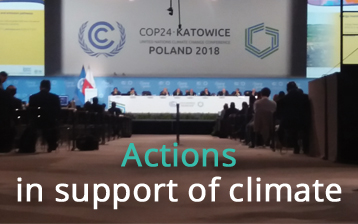In December 2018, the international ONU conference regarding climate took place (Katowice COP24). The main objectives of this conference included integrating agreements establish in Paris 2015 conference and introducing new measures aiming to limit climate changes.
Political scenario and difficulties in concrete actions
Disagreements about the average temperature (which, following the IPCC United Nations report, should increase by 2 degrees by 2030) emerged immediately. The IPCC report considers mandatory to adopt drastic measures in order to diminish CO2 emissions.
Despite these difficulties, it was possible to negotiate some protocols outlining how countries should reduce they emission levels, according to their economic development. It was also taken into account that these measures should also support and protect poorer countries at the same time.
Nowadays, we are also experiencing a steady dispute between USA and China about innovation, technological development and economic supremacy (at the expense of the environment).
As a matter of fact, there is a general lack of interest in the warnings of increase in temperature and Trump announced his exit from the Paris agreement.
Meanwhile, Europe tries to contribute to the climate turn, with measures supporting the spread of renewable energy and energy-saving, for example the “Clean Energy for All Europeans package”.
The photovoltaic technology bastion for CO2 reduction
The abolition of the minimumprice legislation for PV modules in Europe generated a fall in prices since the second half of 2018.
As a consequence, prices of photovoltaic systems decreased, which is a technological bulwark for reducing CO2 emissions.
Are there natural solutions?
A brief video presented by TNC & Nature4Climate during the International ONU conference in Katowice.: #NaturalClimateSolutions for a Low Carbon Future, released during COP 24
One possible solution to diminish CO2 emissions.






